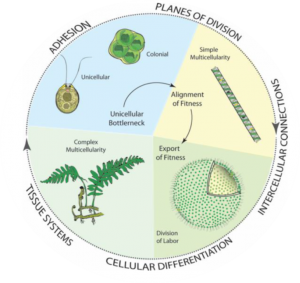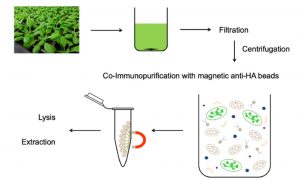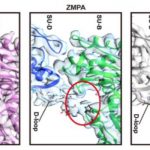Plant Science Research Weekly: December 20th
Review: Pervasive human-driven decline of life on Earth points to the need for transformative change
 Reading this review by Diaz et al. feels a bit like reading a bad report card. Although we know we’re failing in our role as Earth’s stewards, we don’t always want to be reminded of this. But, in this case we need to read and act on the suggestions for improvement. The authors review the findings of the Intergovernmental Platform on Biodiversity and Ecosystem Services (IPBES) Global Assessment Report. It’s a comprehensive review, starting with a look at life on Earth today and an assessment of how it is being impacted by human activities. The authors point out that many activities impact remotely (telecoupling), so international cooperation is needed to implement the urgently needed changes. They point to “five priority interventions (“levers” e.g., environmental law and cross-sectoral cooperation) and eight leverage points (e.g., reduce consumption and inequalities and promote education). Plants, as providers of ecosystem services, food, bioenergy and carbon storage, are instrumental to these efforts. (Summary by Mary Williams) Science 10.1126/science.aax3100
Reading this review by Diaz et al. feels a bit like reading a bad report card. Although we know we’re failing in our role as Earth’s stewards, we don’t always want to be reminded of this. But, in this case we need to read and act on the suggestions for improvement. The authors review the findings of the Intergovernmental Platform on Biodiversity and Ecosystem Services (IPBES) Global Assessment Report. It’s a comprehensive review, starting with a look at life on Earth today and an assessment of how it is being impacted by human activities. The authors point out that many activities impact remotely (telecoupling), so international cooperation is needed to implement the urgently needed changes. They point to “five priority interventions (“levers” e.g., environmental law and cross-sectoral cooperation) and eight leverage points (e.g., reduce consumption and inequalities and promote education). Plants, as providers of ecosystem services, food, bioenergy and carbon storage, are instrumental to these efforts. (Summary by Mary Williams) Science 10.1126/science.aax3100
Review: The many roads to (and from) multicellularity
 Multicellularity is without doubt a fantastic fluke. We know that it arose independently in plants and animals, but how many times? And is there a common “predisposition” to multicellularity in the universal common ancestor? These are the questions addressed in this review by Niklas and Newman. Looking across the green lineage, the authors explore the contributions of cell-cell adhesion, metabolic specialization, and ponder the importance of adaptive advantage for the earliest forms of multicellularity. (Summary by Mary Williams) J. Exp. Bot. 10.1093/jxb/erz547
Multicellularity is without doubt a fantastic fluke. We know that it arose independently in plants and animals, but how many times? And is there a common “predisposition” to multicellularity in the universal common ancestor? These are the questions addressed in this review by Niklas and Newman. Looking across the green lineage, the authors explore the contributions of cell-cell adhesion, metabolic specialization, and ponder the importance of adaptive advantage for the earliest forms of multicellularity. (Summary by Mary Williams) J. Exp. Bot. 10.1093/jxb/erz547
Plants make galls to accommodate foreigners: some are friends most are foes
 Gall formation by plants is a commonly-seen phenomenon that occurs in response to foreign entities (here called “gall-inducers”) such as viruses, bacteria, fungi, nematodes, etc. In this review Harris and Pitzschke set out criteria for what is and is not a gall; by definition the gall is a developmental response of the plant that benefits the gall-inducer, but may or may not benefit the host plant (“gall-former”). As examples, mutualistic galls include root nodules induced by nitrogen-fixing bacteria, whereas roots also form galls induce by pathogenic nematodes. This review explores the developmental and signaling event that occur during mutualistic and parasitic gall formation, drawing on several examples of each, and identify targets for future research. (Summary by Mugdha Sabele and Mary Williams) New Phytol. 10.1111/nph.16340
Gall formation by plants is a commonly-seen phenomenon that occurs in response to foreign entities (here called “gall-inducers”) such as viruses, bacteria, fungi, nematodes, etc. In this review Harris and Pitzschke set out criteria for what is and is not a gall; by definition the gall is a developmental response of the plant that benefits the gall-inducer, but may or may not benefit the host plant (“gall-former”). As examples, mutualistic galls include root nodules induced by nitrogen-fixing bacteria, whereas roots also form galls induce by pathogenic nematodes. This review explores the developmental and signaling event that occur during mutualistic and parasitic gall formation, drawing on several examples of each, and identify targets for future research. (Summary by Mugdha Sabele and Mary Williams) New Phytol. 10.1111/nph.16340
Identification of low-abundant lipid droplet proteins in seeds and seedlings
 The ability of seeds to pack nutrients into dense stable capsules transformed plants’ and animals’ ability to thrive on land (imagine getting through your day without eating any foods derived from seeds or animals that eat seeds). Within many seeds, nutrients are packaged in lipid droplets, with specific proteins such as oleosins instrumental to their formation and stability. Kretzschmar et al. used proteomic approaches to identify low-abundance stage-specific lipid droplet proteins in Arabidopsis seeds. They found several newly-identified lipid-droplet localized proteins, and also created a comprehensive dataset of the lipid-droplet proteome across stages and tissues, with a particular switch noted at the time of seedling establishment when the plant transitions from heterotrophy to photoautotrophy. (Summary by Mary Williams) Plant Physiol. 10.1104/pp.19.01255
The ability of seeds to pack nutrients into dense stable capsules transformed plants’ and animals’ ability to thrive on land (imagine getting through your day without eating any foods derived from seeds or animals that eat seeds). Within many seeds, nutrients are packaged in lipid droplets, with specific proteins such as oleosins instrumental to their formation and stability. Kretzschmar et al. used proteomic approaches to identify low-abundance stage-specific lipid droplet proteins in Arabidopsis seeds. They found several newly-identified lipid-droplet localized proteins, and also created a comprehensive dataset of the lipid-droplet proteome across stages and tissues, with a particular switch noted at the time of seedling establishment when the plant transitions from heterotrophy to photoautotrophy. (Summary by Mary Williams) Plant Physiol. 10.1104/pp.19.01255
Reprogramming of root cells during nitrogen-fixing symbiosis involves dynamic polysome association of coding and non-coding RNAs
 Knowing RNA abundance is nice, but in most cases protein abundance is more biologically interesting. Traubenik et al. used TRAP (Translating Ribosome Affinity Purification) to examine efficiency of translation and contributions of non-coding and alternatively spliced RNAs during the establishment of symbiosis between Medicago truncatula and Sinorhizobium meliloti. The authors found numerous genes that show strong translational controls. Among other findings, they found evidence for a role of a short transcript variant of the Trans-Acting Short Interference RNA3 (TAS3) gene. The authors speculate that this might lead to accumulation of a non-cleavable target mimic of miR390, which could contribute to nodule formation. (Summary by Mary Williams) Plant Cell. 10.1105/tpc.19.00647
Knowing RNA abundance is nice, but in most cases protein abundance is more biologically interesting. Traubenik et al. used TRAP (Translating Ribosome Affinity Purification) to examine efficiency of translation and contributions of non-coding and alternatively spliced RNAs during the establishment of symbiosis between Medicago truncatula and Sinorhizobium meliloti. The authors found numerous genes that show strong translational controls. Among other findings, they found evidence for a role of a short transcript variant of the Trans-Acting Short Interference RNA3 (TAS3) gene. The authors speculate that this might lead to accumulation of a non-cleavable target mimic of miR390, which could contribute to nodule formation. (Summary by Mary Williams) Plant Cell. 10.1105/tpc.19.00647
Rapid single-step affinity purification of HA-tagged plant mitochondria
 In the middle part of the 20th century, cell biology leapt forward with the development of differential centrifugation methods for purifying subcellular compartments. However, these methods require large amounts of starting material and can suffer from contamination. Kuhnert et al. present a new simple and fast method for isolating plant mitochondria through affinity tagging. They generated an N-terminal translational fusion of the TOM5 gene encoding an outer-mitochondrial membrane protein with triple hemagglutin (HA) tagged synthetic GFP (sGFP). Tagged mitochondria can be purified by co-immunopurification with magnetic anti-HA beads. The authors demonstrate the usefulness of this method through a proteomic comparison of mitochondria from wild-type and the bou2 mutant that is deficient in the mitochondrial glutamate transporter À BOUT DE SOUFFLE (BOU) (“breathless”). (Summary by Mary Williams) Plant Physiol. 10.1104/pp.19.00732
In the middle part of the 20th century, cell biology leapt forward with the development of differential centrifugation methods for purifying subcellular compartments. However, these methods require large amounts of starting material and can suffer from contamination. Kuhnert et al. present a new simple and fast method for isolating plant mitochondria through affinity tagging. They generated an N-terminal translational fusion of the TOM5 gene encoding an outer-mitochondrial membrane protein with triple hemagglutin (HA) tagged synthetic GFP (sGFP). Tagged mitochondria can be purified by co-immunopurification with magnetic anti-HA beads. The authors demonstrate the usefulness of this method through a proteomic comparison of mitochondria from wild-type and the bou2 mutant that is deficient in the mitochondrial glutamate transporter À BOUT DE SOUFFLE (BOU) (“breathless”). (Summary by Mary Williams) Plant Physiol. 10.1104/pp.19.00732



